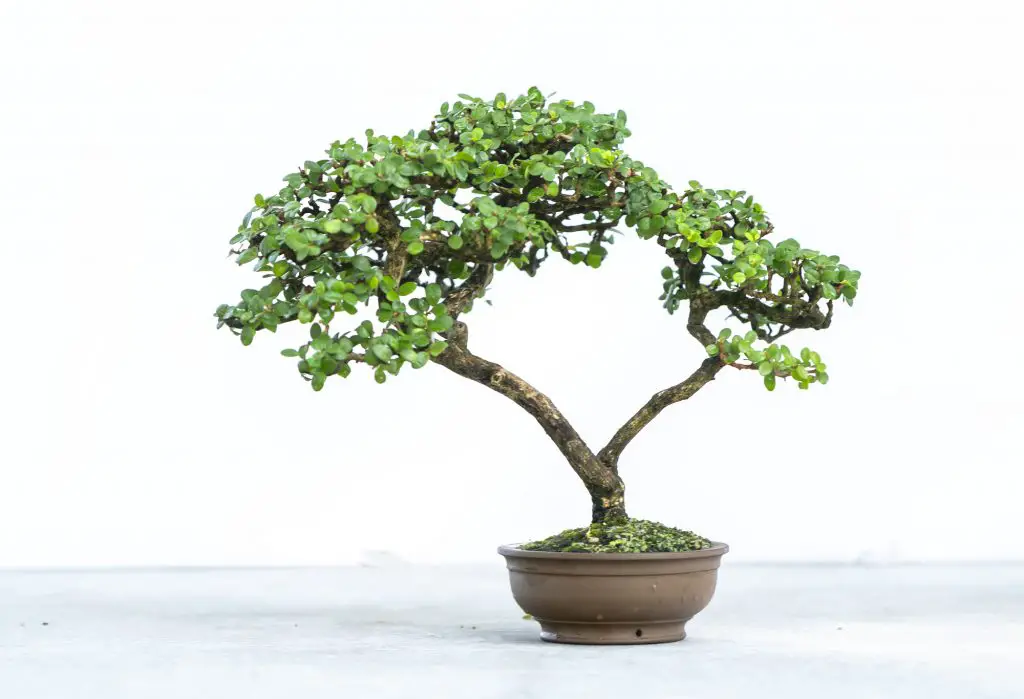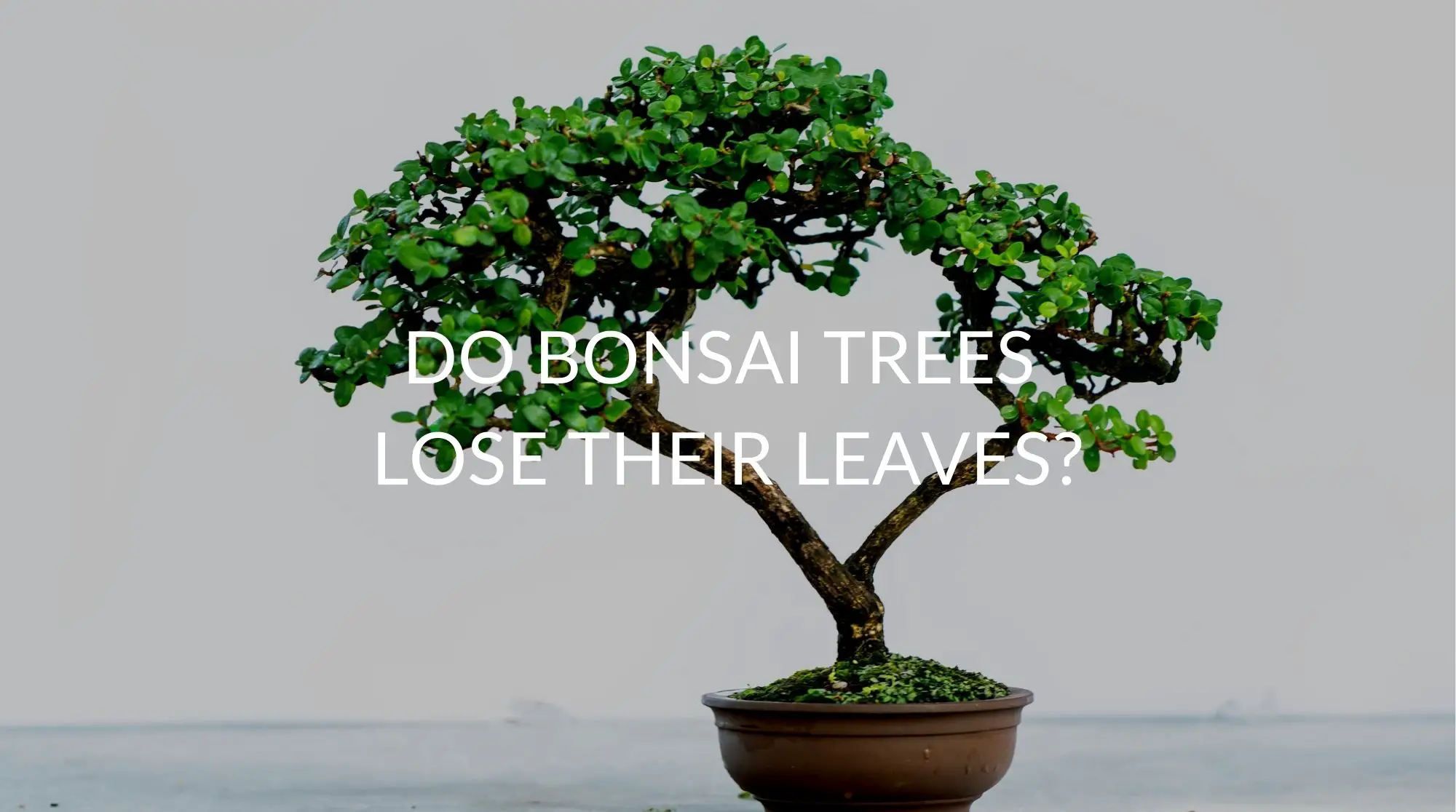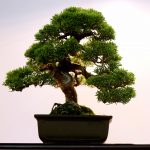Some Bonsai Trees are deciduous trees, which means they will drop their leaves and go dormant in the winter if kept outdoors. However, Bonsai trees may also drop their leaves due to poor growing conditions, such as overwatering or underwatering, poor light, pests, or inadequate fertilization.
If your Bonsai Tree is beginning to drop leaves, it is imperative that you figure out your species of tree to determine if it is receiving adequate care. Not all Bonsai are alike, and different species require very different care.
The earlier you solve the problem, the better! Trees that are grown in adequate conditions will be hearty and may be able to grow back when the problem is fixed, but knowledge is key.
If you notice yellowing or dropping leaves on your Bonsai, don’t wait to figure out the problem. Do some research and get your tree what it needs as soon as possible to increase its chances of survival.
Read on to figure out the cause of your dropping Bonsai leaves and what you can do about it (and how to prevent it!).
Why Is My Bonsai Tree Losing Leaves?
It is a deciduous tree that naturally drops its leaves or needles.
It is possible that your tree is naturally going dormant for the winter. If your tree is a common outdoor Bonsai, such as Japanese Maple or Chinese Elm, these trees will change color and drop their leaves in the fall. In spring, the trees will bud and re-leaf.
Some deciduous evergreen trees also lose their needles in fall, such as some types of Larch, Cypress, and Redwood.
For this reason, it is crucial to figure out what species of Bonsai you have. You can find more information on species identification here.

Placement
It is important to know what species of Bonsai you have so you know if it is an indoor or outdoor Bonsai.
Evergreen Bonsai such as conifers and pines need to be grown outside all year for the best results. Keep in mind you may have to protect them from extreme cold in some climates.
Most deciduous trees, such as Elm, Maple, Oak, Azalea, or Fruit trees, are also best grown outdoors and will lose their leaves in autumn.
Subtropical species, such as Ficus, Jade, Money Tree, and Umbrella Tree, are broadleaf evergreens and can be grown indoors. These trees generally don’t tolerate cold temperatures or frost and generally thrive in temperatures above 60 ℉ (15℃). They may be grown outdoors in summer or year-round in warm climates.
Overwatering
Bonsai grow in very small pots, so it is tempting to think they need to be watered every day. While some Bonsai in very dry climates or very intense sun need daily watering, it is likely your indoor Bonsai tree doesn’t need very frequent watering.
If you overwater your tree and it sits in soggy water, the roots may develop root rot. Root rot makes the roots unable to adequately absorb water and nutrients. When this happens, the tree cannot support its leaves, and they begin to drop.
Underwatering
While it is possible to overwater your Bonsai, it is also possible to give it too little water. If your soil is completely dry, this is detrimental to the tree, and it must be watered immediately.
Since Bonsai are grown in small pots, they do not have a lot of extra water to rely on if you forget to water them for several days.
Inadequate Light
Leaf-drop in Bonsai may also be caused by the tree being too far from the window. Most indoor Bonsai need plenty of light. Especially in winter, when days are shorter, Bonsai may not receive enough light and may drop leaves.
Pests or Diseases
Your Bonsai dropping leaves may be due to a pest or disease on the tree. Regularly inspect your tree very closely to see if you can spot any pests. Be sure to look at the undersides of the leaves, where scale bugs may hang out.
Inadequate Fertilizer
It is important to know your species to determine how frequently to fertilize. Your Bonsai leaf drop may be caused by too little or too much fertilizer or using the wrong type of fertilizer.
Stress
Some Bonsai species are fussy and do not like changes to routine. If you have moved your Bonsai to a new location, it may drop leaves for a few days while it adjusts to its new surroundings. Repotting, pruning, or changing fertilizer may also cause stress.
Will My Bonsai Leaves Grow Back?
If you have a deciduous tree that dropped its leaves in the fall, and the tree is generally healthy, and in adequate conditions, you should expect the tree to re-leaf in the spring. Watch for healthy buds in early spring.
If your tree is not a deciduous tree, the earlier you notice the leaf drop and can identify the problem, the more effective a solution will be. Dropping leaves is your tree’s way of telling you it needs something else from you. If you can solve the problem before the tree begins to die, it might grow back stronger than before.
If you let the problem go on without trying the prevention strategies below, eventually, your tree will lose too many leaves and will not survive. The most important thing is to watch your tree and its signals so you can give it what it wants!
If you are concerned that your Bonsai tree is losing too many leaves, you may want to keep a leaf journal, so you will know if your Bonsai is dropping more leaves than normal.
How to Revive A Bonsai Tree Losing Its Leaves
While it will be important to change the conditions for your Bonsai, don’t do so too drastically or it may cause your tree undue stress. Try to make changes gradually and watch your tree carefully for changes.
It is imperative that you figure out the optimal conditions for your tree species since not all Bonsai are the same.
Move Your Evergreen Outside
If you have a Juniper or Pine outdoor Bonsai, it should be kept outdoors in bright light to sunlight. You may need to protect it from frost if you live in a cold climate.
Temperature
If you have a subtropical species (broadleaf evergreen) like a Ficus or Jade, make sure it is not too cold. These plants must be kept in warm temperatures; freezing temps will kill these plants. If your tree is outdoors, keep an eye on the overnight low temperatures and bring it in if needed.
Test The Soil For Moisture Everyday
The rule of thumb for watering Bonsai is if the top half-inch (1cm) of soil is dry, then it is time to water your tree. The soil will dry out more in certain seasons or climates, so you have to monitor your soil throughout the year.
Immerse Your Bonsai Pot In Water If It Is Very Dry
If your indoor Bonsai soil is very dry, you can immerse the entire pot in water until the air stops bubbling out of the soil. This will ensure that the roots are uniformly soaked. Make sure that your pot has adequate drainage so excess water can drain off. You may need to do this more than once.
Make Sure Your Bonsai Pot Is Draining
It is critical that your Bonsai pot has drainage holes. Bonsai should not be left sitting in water. If your soil is very wet, simply let it dry out for a few days and see if the leaf drop stops. If your soil does not dry out in a couple of days, switch to well-draining Bonsai soil.
Give Your Bonsai More Light
Make sure to check out how much light your Bonsai species needs. Indoor Bonsai typically require bright, indirect light. You may need to move your Bonsai to a south- or west-facing window or outdoors if your tree can tolerate the temperature.
Repot Your Tree
Bonsai trees are cultivated to thrive in small pots, but that doesn’t mean the roots should be too compacted. If you pull your tree out of its pot and see mostly roots and very little soil, or the roots are circling the bottom of the pot, the tree should be repotted. Be sure to use Bonsai soil.
Trim Your Bonsai Roots
If your tree has been sitting in soggy soil for a long time, it may have root rot. When roots are damaged, they cannot deliver water or nutrients to the tree. Pull your tree out of its pot and trim any roots that are damaged, black, or smell rotten. Repot in fresh Bonsai soil.
How to Prevent Falling Leaves On Your Bonsai
Figure Out The Optimal Conditions For Your Species
Some species are pickier than others. Make sure you know how much light, water, and fertilizer your tree needs. You can identify your tree and find information on care here. A tree that is kept healthy regularly will not be weakened and susceptible to yellowing or falling leaves.
Learn How Much Water Your Tree Needs
The rule of thumb when watering Bonsai is to only water when the top half-inch (1cm) of soil is dry. This may change based on the season. Long summer days may require more water than winter. However, if your tree is near a heater in winter, it may get very dry.
If you go on vacation, make sure you make a plan for how your tree will get watered!
Indoor Bonsai in very dry conditions may enjoy misting every 2-3 days to keep the leaves healthy.
Provide Adequate Drainage
Make sure your Bonsai pot has drainage holes and is made from ceramic or porcelain. Many Bonsai trees are sold in soil that is not healthy for the tree. Find out what type of soil your tree needs, or ask for Bonsai soil at a gardening center. It should generally be loose, well-draining soil.
Give Your Tree Adequate Light
Yellowing leaves on a Bonsai may be caused by inadequate light. Indoor Bonsai need long hours of bright, often indirect light. If you don’t have adequate indoor light, you can grow a Bonsai with a grow light.
Check For Pests And Diseases
Most Bonsai are not affected by pests such as spider mites or scale bugs, but occasionally a tree that is weakened due to lack of water or dry conditions may be infected. Misting your indoor Bonsai may prevent this problem. Using an insecticide that is safe for your type of tree should fix the problem.
You should also look for fungus or mold on the leaves of your Bonsai and apply fungicide as needed. You may be able to clean pests and fungus off your leaves using household items such as alcohol or dish soap, but be sure to research whether your species can tolerate this.
Know When To Fertilize
Since Bonsai are grown in small pots with very little soil, they will do best when fertilized on a regular basis. Outdoor Bonsai may only need fertilizer in the growing season, whereas indoor Bonsai may require it year-round. Different species require different types of fertilizer as well.
Don’t Mess With Your Bonsai Too Much
If your tree is otherwise healthy and starts dropping leaves after pruning or defoliation, it may be due to stress. Keep an eye on it, and the problem should resolve. Stress can be caused by moving the plant frequently as well.
Conclusion
If your Bonsai has yellowing or dropping leaves, don’t panic! It is probably due to one of the issues above, which are easily corrected with a little research into what your species of tree needs.
You will need to correct the problem as soon as possible, however, to prevent the death of the tree.
If you can’t figure out your species of tree from existing sources such as this tool, you may want to look into online groups of enthusiasts who may be able to identify your tree from a photograph.







